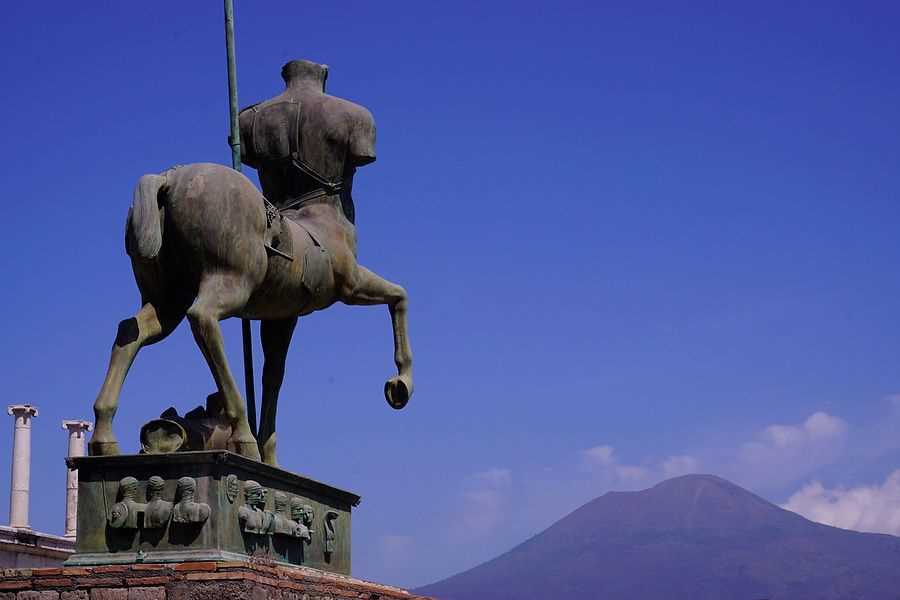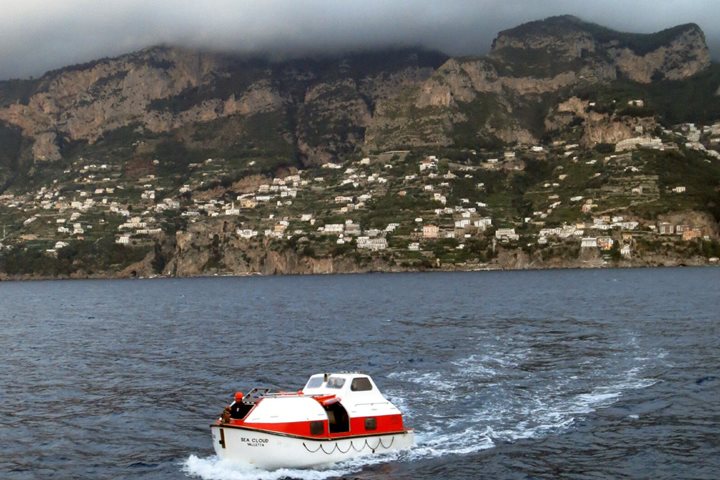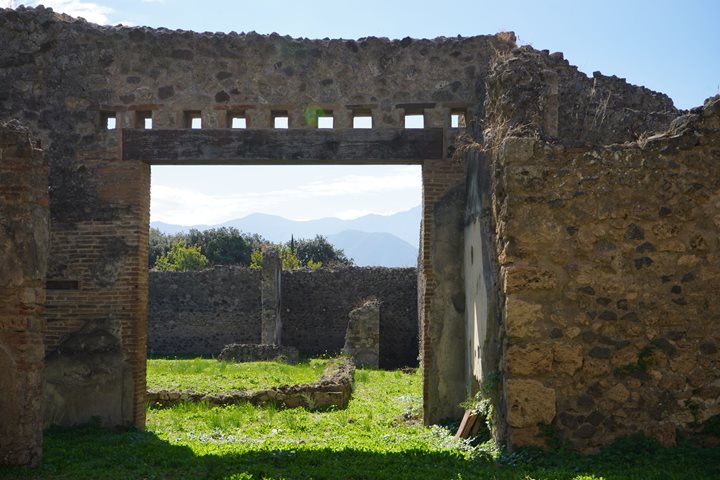Since Sea Cloud does not have bow thrusters, docking a 2,500-ton, football-field-length ship at the small berth in Castellammare di Stabia took considerable expertise and experience—kudos to our captain. At 8:30 we boarded our coaches for the short drive to Pompeii. This ancient Roman city has been world famous since excavation began in 1748. Pompeii for archaeologists is like the ancient fly caught in amber for the paleo-botanist—a moment in history, crystalized. Mt. Vesuvius’s explosion in October 79 A.D. not only destroyed this thriving city of 20,000 but encased the city in 20 meters of ash, pebble, and pumice rock.
Oddly, this matrix is not crystalline hard and has allowed archaeologists to excavate via tunneling beneath the ancient town. The rain of debris and sulphurous gases began around noon and lasted at least eight hours. We have a precious eyewitness account of the eruption from Pliny the Younger, who had accompanied his uncle Pliny the Elder and Admiral of the Roman fleet in the area that was stationed nearby in Miseno. The elder set out in naval ships to save the inhabitants. He reached Stabia, but unfortunately he suffocated and died in Stabia. Pliny’s letters to the historian Tacitus are the only written eyewitness account we have.
This is a city of opulence but the degree of social class stratification remains clearly marked. With the ascendancy of Augustus Caesar, Pompeii underwent a fabulous urban renewal and refinement. Our first stop was the gymnasia of the gladiators. Pompeii had a famous school of gladiators in residence and there were frequent games in the city amphitheater. We passed by the theater and entered the large, 20,000-square-foot House of Menander; the name of which is derived from a painting of the Greek new comedy dramatist.
We visited elegant rooms, including the atrium with the household gods of worship (lares) still standing in the lararium, the triclinium, library, and sleeping quarters. The walls still retained their wonderful painted colors of reds, pale yellow, gold, and white. We walked to the forum on the main street, the Via dell’Abbondanza, passing a laundry, tavern, and various fast food shops. We entered the splendid forum on our way out. The wealthy citizens of Pompeii decorated their homes with explicit erotic art, 90 percent of which is now in Naples Archaeology Museum.
We arrived back on Sea Cloud for lunch, which was followed by a very informative talk on Pompeii by archaeologist Dirk Booms and a treat of traditional Neapolitan pastries.









